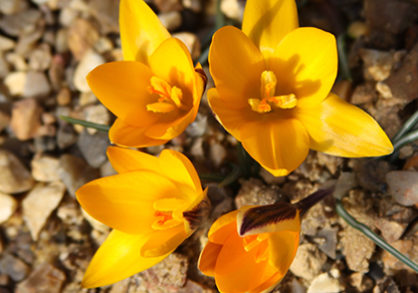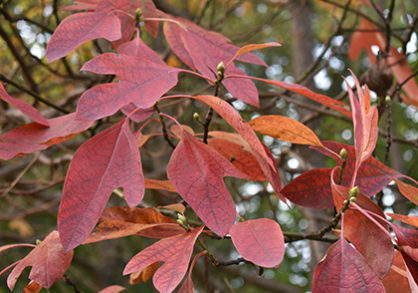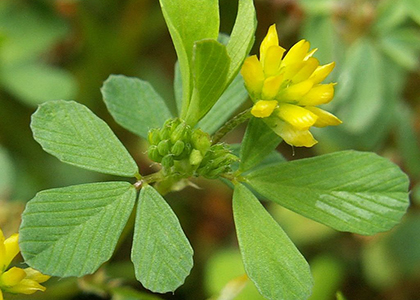
Today is St. Patrick’s Day, a day often celebrated by wearing green, eating corned beef and cabbage, and displaying shamrock decorations. March 17 is reserved for cultural and religious celebrations marking the death of St. Patrick, a revered Patron Saint in Ireland. The tradition of wearing a shamrock dates back centuries. In the book Shamrock: Botany and History of an Irish Myth, the author pinpoints the earliest reference to the wearing of shamrocks to 1681. By the 1720s, shamrocks were commonly worn on hats in Ireland on St. Patrick’s Day. By the 1820s, shamrocks were commonly seen on a wide range of decorative arts including clothing, accessories, books, as well as in churches. Today shamrock displays are ubiquitous with St. Patrick’s Day.
While there is legend of the shamrock being linked to St. Patrick’s teaching of Christianity and its three leaves representing the trinity of the Father, Son, and the Holy Spirit, the shamrock’s symbolic meaning has deeper roots. The ancient druids, who honored the plant as sacred, believed it had the power to avert evil spirits, which they attributed to its three leaflets, a mystical number. The term “shamrock” comes from the Gaelic word seamrog, meaning “little clover.” Despite this linguistic reference to clover, botanists have been trying to pinpoint a specific plant species to the shamrock for centuries.
The first written account associating the shamrock with a known plant was in 1596. English herbalist John Gerard wrote that common meadow trefoil, also known as clover, was “called in Irish Shamrockes.” This still required much narrowing down, as the clover genus (Trifolium) consists of hundreds of species. In 1830, English botanist James Ebenezer Bicheno claimed that the true shamrock was wood sorrell (Oxalis acetosella), which is often sold in stores around St. Patrick’s Day.
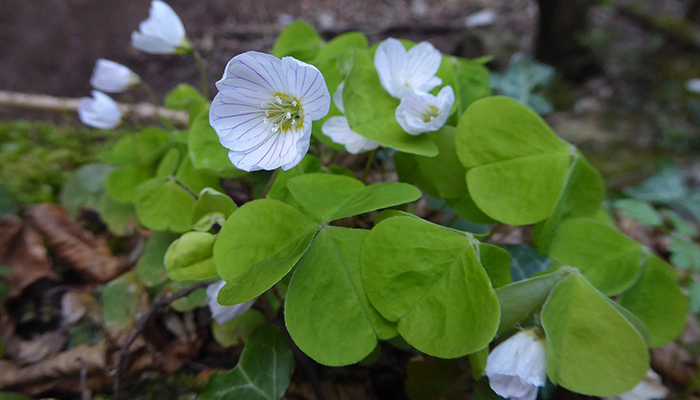
Several people over the following century sought to identify the real shamrock. In 1892, amateur botanist Nathaniel Colgan asked people in 11 Irish counties to collect what they thought was the real shamrock, and most people pointed to yellow clover (Trifolium minus). When he repeated his “experiment” a year later, white clover (Trifolium repens) came out on top. Over 100 years later in 1988, E. Charles Nelson, then horticultural taxonomist in Ireland’s National Botanic Gardens, decided to repeat the study with a much larger number of respondents. This time, yellow clover accounted for 46% of the results, followed by white clover at 35%.
According to author Mary Mulvihill, the matter was officially settled near the end of the 20th century when Ireland’s Department of Agriculture had to nominate an ‘official’ species for commercial licenses to export shamrocks, and chose the most popular species, Trifolium dubium, also called yellow clover.
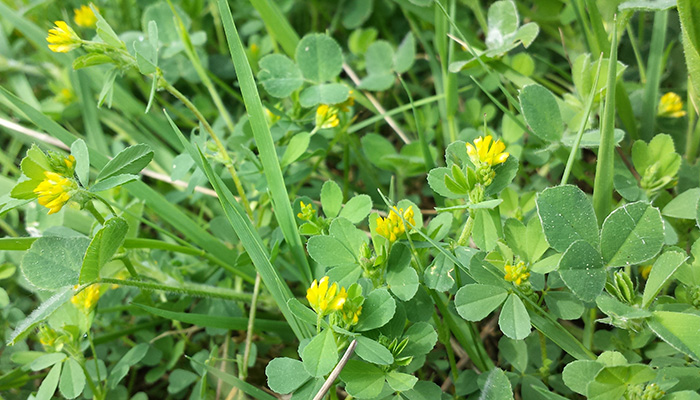
There are nine species of Trifolium that grow in this area including red clover and white clover. If you want to find a clover plant on this St. Patrick’s Day, the best place to look is in fields and lawns.
Read more
Continue exploring how plants shape cultures around the world.
Native plants of Ukraine connect us
Draw closer to the plants and people of Ukraine by walking among their native plants, in digital plant collection.
Lucky peas for the new year
Eating Hoppin’ John is one of countless traditions across cultures worldwide to bring good luck in the New Year.
Sassafras: Native gem of North America
Sassafras is a North American tree steeped in Indigenous culture throughout its range within deciduous woodlands of the northeast and southeast United States.
